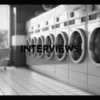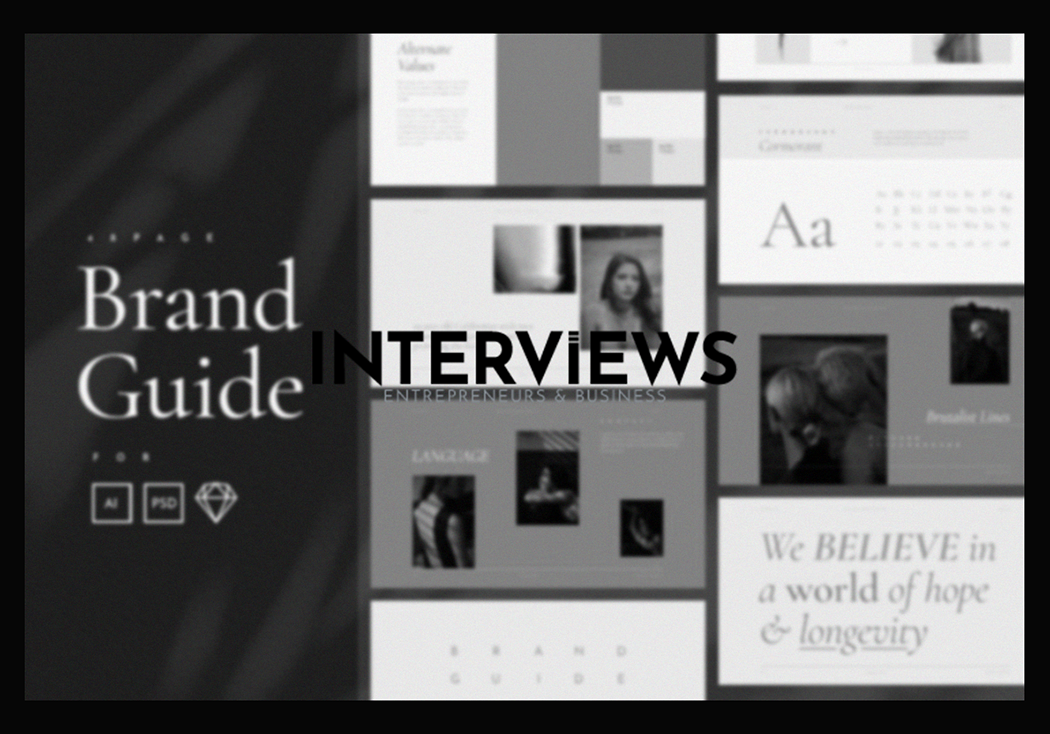Starting a clothing line? It sounds glamorous. Runway shows, magazine covers and maybe a reality TV series. But before sketching designs, let’s discuss the important details. Even dreams need budgets.
The Cold Hard Cash: Startup Costs for Your Clothing Line
You want to be a fashion mogul? Great! You need money to make money. Think of it as planting seeds before reaping a clothing empire. Here’s your initial investment breakdown:
- Registration and Legal Fees: Uncle Sam and your state want their cut. You must register your business, get permits, and possibly form an LLC. Avoid personal bankruptcy. It costs money and is the price of being a grown-up business.
- Design and Sample Shenanigans: If you aim higher than plain tees, you require designs. Software, freelancers, or coffee to fuel brainstorming—design has costs. Samples are dress rehearsals for real clothes. Fabric, labor, tweaks—sample costs accumulate quickly.
- Materials and Production: Fabric, zippers, buttons, and labels are crucial for your clothing line. From silk to buttons, these are raw ingredients. Production depends on your preferred clothing-making method—more on that later.
- Website and Online Store: Today, you’re invisible without an online presence. A website is mandatory with an online store. Hosting, design, and platforms like Shopify or WooCommerce make it snazzy. It’s your 24/7 salesperson.
- Marketing and Advertising: Building it isn’t enough; people must know it exists! Allocate funds for ads, social media, and influencers. Marketing is the megaphone that shouts, “Hey world, look at my amazing clothes!”
- Inventory (Maybe): This depends on your business model. If stocking clothes, inventory costs are big upfront. If opting for print-on-demand or dropshipping, you can avoid this step for now, which is a stress-free option.
Keeping the Lights On: Ongoing Operational Expenses
Startup costs are just the start. Running a clothing line maintains a stylish machine. Here’s the monthly grind:
- Website Hosting and Maintenance: Your website requires upkeep. Hosting fees, updates, and maintenance are ongoing costs. Think of it as rent for your online store.
- Marketing and Advertising (Again!): Marketing is not one-time; it’s continuous. Keep ads running and your brand in feeds. Consistency matters in the fickle fashion world.
- Packaging and Shipping: Delivering creations costs money. Boxes, bags, tape, and labels accumulate with every order. Presentation matters; nobody wants their fabulous top in a crumpled bag.
- Payment Processing Fees: Every time someone buys, processors take a tiny cut. It’s optional convenience, so watch those percentages—they can reduce profits.
Business Model Mania: Picking Your Path and its Price Tag
Your clothes’ creation method affects costs significantly. Let’s break down key models:
- Print-on-Demand (POD): Imagine selling clothes without touching them. Upload designs; they print when ordered and ship it. You pay per sale with no inventory risks—lower initial cost but lower profit margins too. For more info on POD, Bizee offers a guide.
- Dropshipping: Similar to POD but involves reselling existing items instead of printing designs. No inventory headaches but less control over quality. You’re curating rather than creating.
- Traditional Manufacturing: Design, source materials, make clothes by yourself or a manufacturer. Higher upfront costs for materials and production. You control everything and hold inventory but may see higher profit margins if successful.
Cost Influencers: What Makes Your Clothing Line Wallet Weep (or Cheer)
Not all clothing lines have the same costs. Here’s what influences expenses:
- Scale of Your Operation: A tiny boutique from your spare bedroom costs much less than aiming for department store dominion. Think small versus giant oaks; different growth rates require different resources.
- Type of Clothing: Luxury items cost more—cha-ching! Basic tees? Less expensive. The fabrics and complexity impact costs and pricing. Are you targeting everyday chic or red-carpet ready?
- Production Methods: DIY projects? Outsourcing overseas? Local ethical manufacturers? Your choices change costs and brand stories. Interested in ethical production? Branded Agency’s guide covers responsible fashion brands.
- Marketing Muscle: Word-of-mouth versus paid ads and PR firms? Marketing varies widely depending on your budget and goals.
Show Me the Money (Ranges): Real-World Cost Examples
Let’s discuss real-world figures now. Here are some ballpark estimates. These ranges may differ:
- Tiny Online Clothing Line: Starting small with POD or dropshipping could require $500 to $10,000. This is hobby cash or side-hustle funds.
- Medium-Sized Clothing Brand: Stepping up with traditional manufacturing or an online presence demands about $2,000 to $5,000. Serious business needs motion and plans.
- Large Retail Clothing Line: Aiming for stores with significant inventory demands $64,500 to $131,300 or more. This is top-tier territory needing robust strategy.
- Luxury Clothing Line: High-end fabrics and production require a minimum cost of $25,000 to $50,000. Luxury comes with heavy expenses, both to create and project.
Blueprint for Success: Developing Your Business Plan
Ready to start? Hold on. You need a plan before spending any money. A business plan is your roadmap and sanity check. Here’s what to lay out:
- Define Your Brand DNA: Mission, vision, values, and clothing type define you. What do you stand for? What style do you represent? Eco-conscious streetwear? Luxury minimalism?
- Market Research Mania: Understand your target audience, analyze competitors, forecast trends. Who buys from you? What’s hot in current fashion?
- Marketing Strategy Masterplan: How will you reach customers? Social media blitz? Influencer engagement? Paid ads? Map your marketing approach carefully.
- Financial Fortress: Estimate startup costs, production breakdowns, projected revenues. Numbers are essential! Be realistic about costs and sales forecasts—spreadsheets help.
Design Time: From Idea to Garment
Is your business plan taking shape? Now comes the fun part—creating clothes!
- Design Skill Sharpening: Fashion principles, pattern making and garment construction are key skills. You don’t need to be a pro, but grasping basics helps immensely.
- Fabric and Material Quest: Source high-quality materials compatible with your brand—silk dreams or organic cotton? Select fabrics that match aesthetics and ethics. Quality materials enhance your clothes.
- (and perceived value).
- Design Creation Spree: Create unique designs that capture *your* brand. Sketch, drape, digitize, refine. Let your creativity run wild. Keep in mind – designs must sell. They need utility, not just beauty.
- Production Method Puzzle: In-house sewing? Outsourcing? Print-on-demand? Choose what suits your budget and control wants. Need ideas? Crowdspring’s blog has tips to kickstart your clothing line.
Brand Building Bonanza: More Than Just Clothes
A clothing line is more than fabric; it’s a brand. It’s a vibe, a tale, a link. Let’s create that brand magic:
- Name and Logo Lovin’: Memorable name and logo. Easy to recall, easy to love, reflecting your brand’s essence. Think Apple, Nike, or insert your brand name here – make it unforgettable.
- Brand Identity Deep Dive: Define your style, tone, and values. Is your brand bold and rebellious? Timeless and classy? Fun and quirky? Identify your brand’s personality.
- Website and Social Media Stage: Create a polished online presence to show your brand. Website, Instagram, TikTok, Pinterest – meet your audience where they are. Stay stylish and engaging.
- Branding Element Symphony: Color palette, font style, and aesthetic must harmonize. Visual consistency boosts brand recognition. Think Tiffany blue or Coca-Cola red – colors and fonts can be powerful.
Marketing and Sales Spectacle: Getting Those Clothes Sold!
Completed designs? Built your brand? Time to sell!
- Marketing Plan Mayhem: Unleash your marketing strategies. Social media campaigns, email newsletters, influencer partnerships, pop-up shops – meticulously plan your marketing moves.
- Online Promotion Power: Embrace social media, email, and online ads. Digital domination is key here; this is where your audience scrolls.
- Partnership Possibilities: Collaborate for success. Align with influencers, bloggers, and complementary businesses to widen your scope. Two brands together are often stronger.
- Sales Channel Choices: Create an online store? Explore retail? Wholesale options? Direct-to-consumer website? Partner with boutiques? Decide on your sales method.
LLC Lowdown: Legally Legit and Liability Limited
Let’s discuss legality for a moment. Forming an LLC seems complex, but it is smart business.
Why an LLC is Your Fashion Friend:
- Liability Shield: LLC = Limited Liability. Business debts or lawsuits? Your personal assets (like your house) generally stay safe. Without an LLC, you and the business act as one legally – risky.
- Professional Polish: An LLC sounds bona fide. It boosts credibility among customers, suppliers, and investors. It signals seriousness about your fashion venture.
- Finance Fence: Keep business and personal finances apart. Simplifies accounting, tax prep, and provides clarity in finances. Safeguards your personal funds from business risks.
- Tax Perks (Maybe): Depending on how structured, LLCs can allow tax flexibility. Route to a tax pro for insights on potential savings.
- Operational Ease: Simplifies setting up business bank accounts, securing loans, and otherwise managing business tasks. Administrative tasks become easier.
When an LLC Might Be a “Meh”:
- Tiny, Low-Risk Ventures: Very small, minimal risk? A sole proprietorship may suffice. But consider the future.
- Early Stages Exploration: Testing ideas? Start without an LLC and form one later as you grow. However, liability remains crucial to consider.
LLC Launch Checklist:
- Name Game Strong: Choose a unique name available in your state.
- Paperwork Parade: Submit LLC formation docs to your state.
- EIN Enrollment: Obtain an Employer Identification Number from the IRS – necessary even if hiring isn’t immediate.
- Operating Agreement Oasis: Craft a rulebook for your LLC – how operations unfold, roles defined, etc.
- Bank Account Bonanza: Set up a business bank account to highlight financial separation.
Clothing Brand Cliff Notes: Starting Strong
Overwhelmed? Let’s simplify this into easy starting steps:
Develop That Business Blueprint:
- Brand Definition Drill-Down: Identify USP (Unique Selling Proposition), values, and essence.
- Target Market Telescope: Define who you’re dressing. Know their needs.
- Business Model Brainstorm: POD, dropshipping, traditional – select your path.
- Marketing Strategy Sketch: Tactics for promotion?
- Budget Breakdown: Outline costs, revenue, for financial clarity.
Design Your Dream Line:
- Trend Tracking Tactics: Research trends for fresh designs.
- Design Development Dash: Create a collection that reflects *you* and appeals to your audience.
- Material Magic: Source quality materials that align with your brand.
Production Power-Up:
- Production Path Pick: In-house production or outsourcing? Choose with care.
- Cost Control Command: Negotiate terms and manage production costs carefully.
- Quality Check Quest: Ensure garments maintain excellent quality.
Marketing and Sales Sprint:
- Online Oasis: Build a website and social media presence.
- Promotion Prowess: Leverage social media and email effectively.
- Customer Connection Craze: Provide top-tier service to cultivate loyal fans.
- Partnership Pursuit: Collaborate for expanded outreach.
Legal and Financial Legwork:
- Business Registration Ritual: Get official permits and necessary licenses.
- LLC Consideration Clause:> Determine whether liability protection is suitable (most likely yes).
- Finance Fortress Foundation: Track income and expenses; manage finances skillfully.
Success Secret Sauce:
- Authenticity Ace: Stay true to your brand identity, vision, and values.
- Patience Potion: Building a brand is a journey; don’t expect instant results.
- Adaptability Advantage: Fashion evolves; be ready to adjust and evolve alongside trends.
- Customer-Centric Creed: Happy clients lead to loyal customers = brand love.
Legally Labeling Your Line: Trademark Time
Seeking to protect your brand name? Trademark it! It’s like building a legal boundary around your identity. Apply to the U.S. Patent and Trademark Office (USPTO). If all goes right, in about 12 months, you may secure into a trademark. It’s time-consuming but crucial to safeguard your brand.
Profitability Pursuit: Where the Money Is in Clothing
Want to amplify profit? Consider these lucrative options:
High-End and Branded Havens:
- Markup Magic: Luxury brands can charge premium prices – higher profits await here. Brand equity justifies these prices.
- Brand Loyalty Lagoon: Strong brands cultivate loyal clients who willingly spend more for quality and brand status.
Other Profit Powerhouses:
- Vintage and Second-Hand Vaults:
- Sustainability Star: Eco-aware consumers flock to vintage fashion.
- Niche Nirvana: Focus on eras or styles that set you apart in vintage markets.
- Platform Power: Use online marketplaces like eBay or Poshmark – vintage goes digital.
- Niche Category Conquest:
Aiming at markets like chef jackets or athletic wear is beneficial. Stable sectors have consistent clothing needs.
- [1]Fashion Industry Basics: Understand trends, target audiences, analyze competition – do thorough homework.
- [2]Business Plan Blueprint (Again!):The same stuff as before: establish goals and marketing plan.
- ●[3] Niche Navigator:** Pick streetwear or sustainability; find your niche. [4]Brand Identity Ignition:** What makes you unique and representing? [5] Goal Settings Gala:**Identify short-term and long-term objectives; set attainable goals. [6]Design Channels: :: Explore inspiration through magazines or brands; develop designs directly or with help from freelancers.
*Design Channels*
[8] Supplier Scouting:** Find fabric sources aligning with style and budget. **[9] Production Pathfinding:** DIY or use manufacturers or POD- choose wisely. Additionnal methods* [1] Marketing & Sales Spree: [18]Build online structures like web houses & social media platforms ; formulate strategies via social media or influencers; generate awareness & opt dropshipping if budget is tight; price products wisely; register your business & legitimize it. ]
- *Bonus Beginner Boosters:*
- [6] Network Ninja Moves:** Meet fellow entrepreneurs , seek advice before diving into it.[7]Patience Practice:** Work diligently; successful brands take time; don’t expect quick fame. [8] Trend Tracker Tactics:** Fashion’s ever-changing; Stay knowledgeable & adaptable—don’t rest on assumptions. [9]Feedback Fanatic: **Hearing customers’ feedback matters. Be willing to comprehend and evolve. Starting a clothing line entails a wild adventure—both aspirational and challenging. With careful planning, creativity , and tenacity you can weave together your fashion narrative. May you stitch together a successful endeavor with straight seams and ample profits!
- (1)
- <*Major Cash Outlets:* »Custom Print Pods (POD) Paradise:** Launchpad with low investment. Design only on demand when sold. <*Unique Appeal Creation:** Customize for customers – offer one-off designs that stand out.
- (2)
- (5)<*Eco-Friendly Empire:** Seize this growth sector with sustainable apparel. Premium price for eco-friendly materials and production attracts aware consumers . <*Kidswear Kingdom:** Kids perpetually need clothes, constantly growing needs. Parents will pay for quality & style.(7)(inside)
No Experience, No Problem? Starting a Clothing Line Anyway n.
No fashion experience? No worries. Fashion thrives on enthusiasm, not just degrees. Here’s your beginner’s guide:




